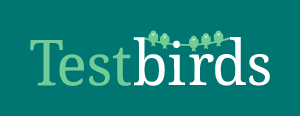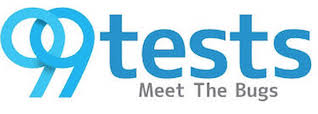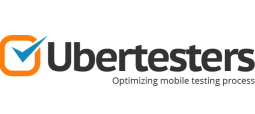
Image:
sourceHi, Habr! My name is Evgeny Kuznetsov. I work at
Badoo , in the QA department.
Almost five years ago I began to be interested in testing: I read books, searched for information on the Internet. At one of the
forums I came across a topic about a side job, where one of the participants left a link to the site
uTest.com . And it was a really good find, since uTest turned out to be the largest platform for testers with lots of useful information and hundreds of paid crowdsourcing projects.
I think many here have already heard about this site or about similar sites. But, oddly enough, I often see surprised faces when I start talking about crowd testing. So the purpose of this article is to put useful information to the masses.
What is crowd testing?
Suppose you are a product manager and are going to release a new version of the application for Android and iOS. The deadlines are burning, you urgently need the results of regression testing, and the only tester in your team says that it will take two days, and then it will take another day to fix possible bugs. Moreover, one of the Android devices broke down and needs to be replaced in order to provide at least basic platform coverage.
How can you speed up the testing process without compromising product quality? You can expand the QA-team and buy more devices; write a bunch of autotests and run them in the "cloud"; Finally, rent a few devices, sit down and test the application with a QA-engineer. Or turn to a crowded testing platform. This is usually a site where thousands of testers are registered. They are ready to test any web or mobile application on their own gadgets and laptops.
You need to provide a link to the assembly (for example, using
HockeyApp or
TestFlight ), select the operating system and devices on which you want to test your product. You can even choose the country where testers are located. In general, the wish list can be very long. Then the platform manager will send out invitations - and the army of testers will start work. After some time, you will get results and decide which bugs you need to fix, and with which you can exist after the release.
So the whole process looks to the customer. And now let's look at it through the eyes of a tester.
What you need to start testing
Nothing special. If you are reading this article, it means that you have a computer, mobile device or something else. This is sufficient for registration on the platform and participation in projects. Specify in the profile the model of your device, the OS version, the list of browsers on the computer, etc. It will be better if you have several mobile devices, for example, iOS and Android devices, the probability of getting invites will be higher.
I also recommend that you arm yourself with the knowledge of the theory of testing, or at least study the documentation and guidance for beginners (this information is always in a special section of the site).
So, first you will be asked to take a test in order to understand how well you can search for bugs and write reports. After that, everything is simple: you get an invitation, read the project description and decide whether you will participate in it. Time to search for bugs is limited. After completing the testing cycle, all reports are viewed by the project team leader, and then by the customer. The bugs you send are either accepted or rejected.
Bug accepted ⇒ get paid.
Bug rejected ⇒ you get experience, as in the comments to the report the reason for the rejection will be explained.
Why is crowd testing a novice tester
Experience
I started working at the crowds testing sites before I found my first job. I had good knowledge of the theory of testing, but there was no practical experience (without which many recruiters do not even want to start a conversation). Working on crowdsourcing platforms, you will have an excellent practical experience in software testing. A variety of software will depend on your existing gadgets. I had an iPhone and a laptop (on Windows 7) with a virtual machine installed (on which XP and Vista were spinning). A little later, I bought an Android device and an iPad.
For the first two months, I participated in about 20 projects that lasted from several hours to several days. E-commerce applications and websites, games, social networks, instant messengers ... If you actively participate and find a lot of bugs, your rating will increase, which means you will receive more invitations.
Having tested a bunch of software, it is easy to understand that bugs usually “hide” in the same places. In addition to checking the main positive and negative scenarios, experiment with the settings of the devices, with the network, use airplane mode, because often developers forget to correctly handle the behavior of the software in the absence of communication.
I remember how I was worried when I reported on my first bug: I tried to describe everything in great detail, I attached several screenshots and videos, as each rejected bug may affect the statistics. By the way, it is very important to view the reports of other participants. Not only during testing (to avoid duplication), but especially after it when the team leader and the customer check them. Familiarizing yourself with someone else's rejected bugs will give you a more complete picture of the expectations of managers and customers.
As a result, your portfolio will contain many interesting projects and funny bug stories that can be used for interviews.
The more productive you are in the test cycles, the more invitations to them you will have.
New Skills
Obviously, when testing a large number of software, you will learn new skills: how to remove crash logs from an Android / iOS device and read them, how to use ADB Console and monkey testing, how to properly use all the device settings (enable application restrictions on access to camera / geolocation, “universal access”, zoom mode), how to use browser tools for developers and many others. And you will have to find out all this in order to find more bugs, since each project is a mini-competition between testers.
You will learn to work with new tools. For example, one of my projects was the verification of Google Analytics events, on that day I discovered
Charles Proxy . A little later, I began to use all of its features (throttling, rewriting, mapping). I also remember that I had a security testing project, and I found the great
Zed Attack Proxy tool.
By the way, if you want to upgrade your skills, I recommend the article
"Testing mobile applications: tips & tricks".Curiosity is the most valuable skill of the tester.
Community
Communication is one of the most important skills for a tester. This is the key to everything. Whatever you want to know, find or get, you need to communicate. Every new person can give you some new opportunities. On the crowded testing platforms you will meet many interesting people who will be on the same wavelength with you. There are hundreds of topics on the forums where you can ask any questions. This is especially important when you begin your journey in testing, because you can learn and get advice from more experienced people.
Be active, ask questions in the chat test cycle. If you think that something is missing in the description, be sure to tell about it. Help other participants if you know the answers to their questions. Timlid or the customer will notice this - and later you will be able to receive invitations to projects “for the elect”.
Communication is the key to opportunity.
Language practice
We all know that knowledge of the English language significantly increases competitiveness. Therefore, you simply must register on the overseas site. Your level will increase by an order of magnitude in just a few weeks, since all the documentation and communication will be in English, and, of course, the bug report must also be on it. At first it will not be very familiar, but vocabulary is definitely worth it.
Do not be afraid to make mistakes: for 90% of the participants, English is also not a native language.
Money
The final argument is money. Jobs on crowded testing platforms can be considered as paid internships. After all, you get experience and income. The amount of payment will depend on the criticality and the number of bugs found. On most platforms, it varies in the range of 3-15 y. e. (depending on the project, they can also unfasten 50 u. e.) for the bug.
At first, I earned about 400 euros per month, working a couple of hours a day. Then I decided to focus not on the quantity, but on the quality of the bug reports. He began to spend more time on the platform - and as a result he began to earn about 700–800 euros per month. My rating has grown significantly - and soon I received from the project manager an invitation to a small team for a closed cycle of testing a single product. After about 12 hours of work, each of us received more than a thousand euros.
Try to focus on finding critical bugs and improving the quality of reports, and not on their number. Then the work will be more interesting and eventually you will earn more.
The platforms I worked on

The largest online community of software testers. In addition to paid projects for testing, there is a lot of useful information, articles and a good forum. Perhaps this is the best place to start working. Unfortunately, I have with him, as they say, did not work out. Four years ago, there were very few projects for testers from Russia on the platform (now, with this, as far as I know, better). At that time, customers were mainly from Europe and the USA, and they wanted to test products in their potential markets. Russia, of course, did not belong to them. Of course, you could resort to tricks: use a VPN and write in a profile that you are a tester from England or the USA. So I, in fact, did to get my first project. But for me, this method was not very convenient, so I started looking for other platforms.

Previously, the platform was called
Testcloud, and it became my favorite crowd test site.
Convenient interface, streamlined interaction with timlids and customers, a good rating system for testers and excellent rates for found bugs (money withdrawal via PayPal). On this platform, I had a lot of different and interesting projects. For several months, I was the only Russian-speaking tester, so I got all the projects with RU-localization.
A year later, I decided to become a team leader on this platform. Timlid on the crowded testing site is the same freelancer who receives invitations to projects; only he does not test products, but checks bug reports and controls the entire testing cycle. But, unfortunately, at that moment I was very busy at the new place of work - and due to lack of time I had to leave the site. In general, the guys have a great team, and I am glad to see that the platform is growing. Highly recommend!

Excellent platform with different projects. Several times they even sent me gadgets for testing, and some I still use. By the way, a couple of years ago a Russian version appeared -
crowdtesting.ru .

Participated in several cycles of testing.
Some projects require knowledge of German.

Indian platform. I still get invitations for projects from her.
And a few more resources

If you believe the information on the site, the platform works with Facebook, Spotify and Microsoft. So, if you have a desire to report some annoying FB bugs (I, perhaps, have a couple dozen), this is the place for you.
I want to note that this project is the organizer of
testos (hackathons for testers), one of which
was held in Moscow .

It has nothing to do with a well-known company. But, who knows, you may have a pre-release version of the Uber application in your hands.

Another large platform. An interesting feature: they pay not for bugs found, but for the time spent on testing. And there is a cool blog where you can read
testers stories from this site.
Conclusion
I found the first job without any problems, largely due to the experience in crowding testing. There were a huge number of letters and calls that turned into four offers from five interviews. In my next company, everyone was very interested in testing at crowded testing sites, and I even acted as a customer at one of them. And now, while working in the London office of Badoo, I use many of the skills that I gained at the time.
Working on crowdsourcing platforms is a good opportunity to start a QA career. You will gain experience, learn how to use new tools, meet interesting people, earn good money, and most importantly, enjoy testing.
Testers do not break the software - they break your dreams about it ... (c) James Bach
PS In this article, I mostly described the positive aspects of crowd testing for those who are just going to do testing. But, of course, at such sites there is work for experienced testers: projects that require in-depth knowledge of automation, security, UX, etc.
PPS By the way, in Badoo, we also use crowd testing to search for security bugs. So, if you are an IT security expert and want to make money (up to £ 2000 for a vulnerability!), Then welcome to our
bounty program on
hackerone.com .